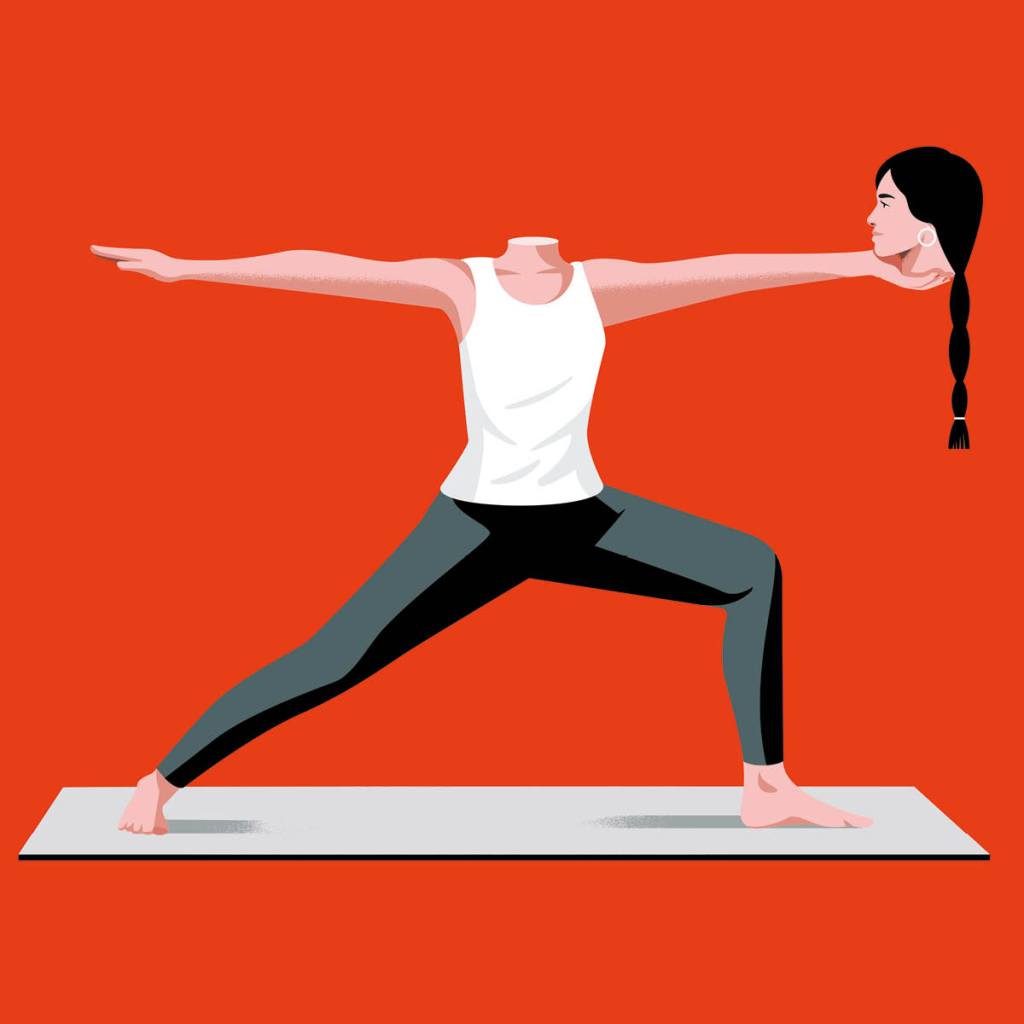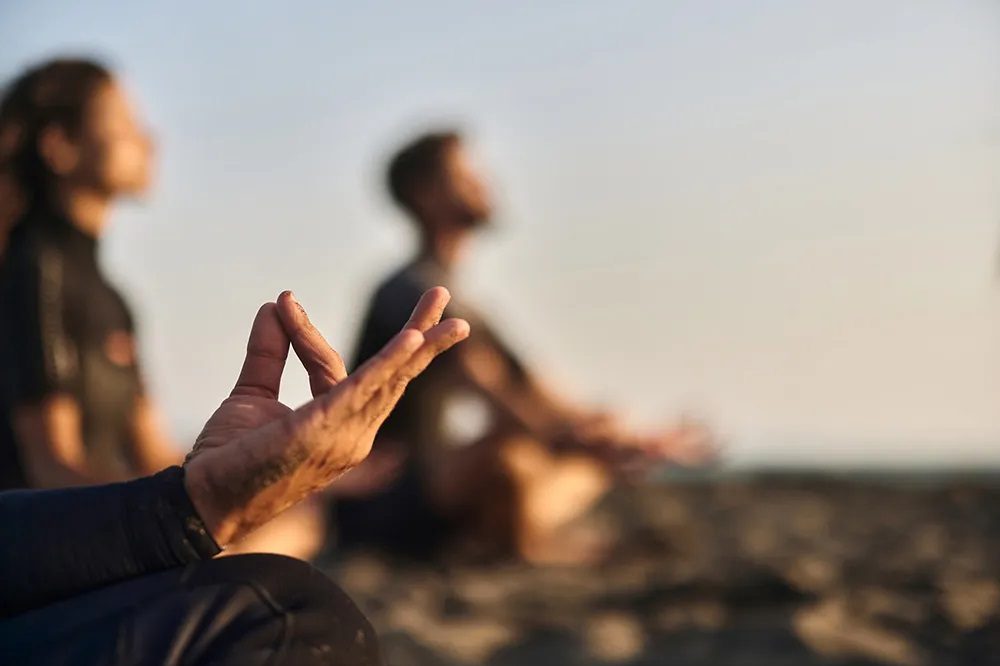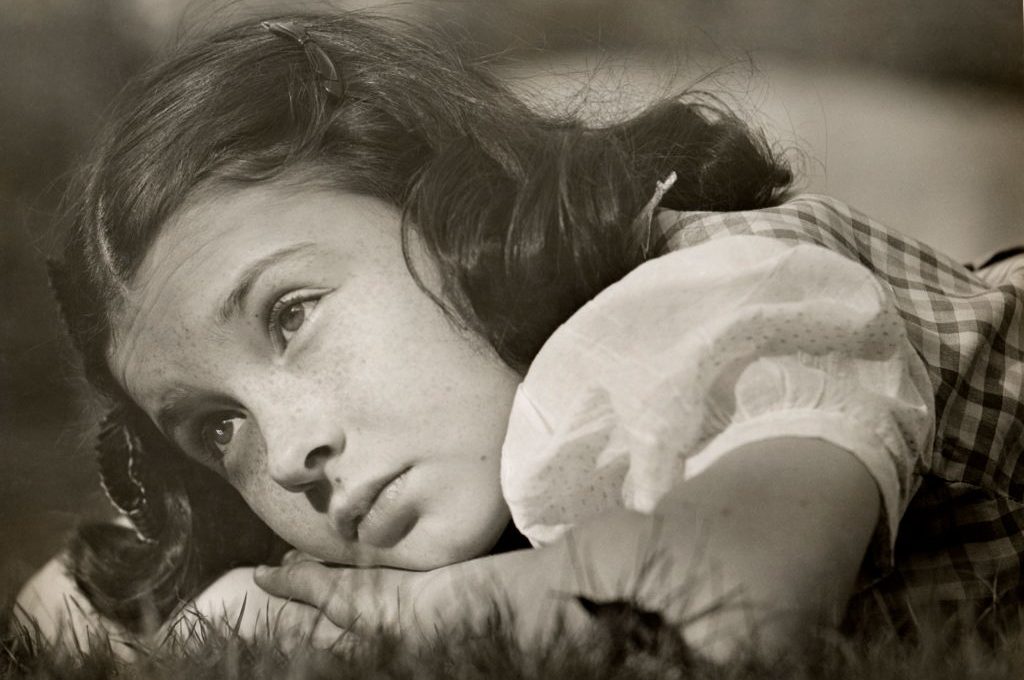Recently it occurred to me that I’ve been doing yoga for twenty years. This happened while I was doing yoga, which makes a lot of sense. My Buddha-worthy insight reminded me of a time when I’d only been doing yoga for three years and still gazed around at my surroundings wonderingly, like a toddler, which, in a yoga sense, I was.
I’d traveled to San Francisco for a Yoga Journal conference, the vogue back in the Aughts. All the famous yoga teachers, and their willing dues-paying acolytes, gathered in the Brutalist basement of the downtown Hilton, not a particularly beautiful or Zen location. I took workshops all day, including a lousy, pretentious harmonium-soaked one from an emaciated master who looked like a yoga version of Iggy Pop, but with worse taste in music. Nonetheless, he said something that stuck with me: “I’ve been practicing yoga for twenty years.”
This was in 2007, so that would have meant he’d been doing yoga since 1987. The previous century. It just seemed impossible to me that anyone could do yoga for that long. I figured it would just fade away, as so many of my enthusiasms seem to do.
And yet, here I am, in 2024, in my twentieth year of yoga. The teacher who made the arresting twenty-year announcement “has retired from public life,” according to his Wikipedia page, which probably had something to do with the sexual-molestation case that engulfed the New York studio he founded, even though he wasn’t personally implicated. I don’t know if he’s still doing yoga, and I don’t care. But my own twenty-year yoga-versary has had me thinking a lot about what yoga was when I started, both to me and the culture, and what it is now.
My first encounter with it came in 2004, when I had a bit of a break with reality after my first novel didn’t sell many copies. Twenty years down the line, I call the commercial failure of one of my books “Tuesday,” but at the time it was new, causing face-clawing and sobbing, possibly under the influence of drugs. My kind, patient wife Regina suggested that I try some yoga with her at our local 24-Hour Fitness.
I liked the way it made me feel, physically and mentally. So we took another, and it turned into a regular routine. Soon after, we moved to Los Angeles to chase career rainbows. For a while, I practiced at a small neighborhood studio in Los Angeles with a lovely den mother of a teacher and a small group of intimates I hold dear to this day. The unpretentious classes gave me a feeling of warmth, friendship and physical health, and are a big reason while I’m still practicing now.
Meanwhile, at one of the Yoga Journal conferences, I fell under the sway of an Ashtanga master. He was and is a vast repository of arcane postural, breathing and meditation techniques, and a deeply studied scholar of ancient texts and yogic lore. He also possesses a dry, ironic sense of humor and a general humility, always making sure to tell his students, “I’m nothing special.”
But I considered him special enough to follow him to a yoga retreat in Thailand for my fortieth birthday, and to apply to his annual teacher-training course in Boulder, where he accepted me alongside a global group of yoga-studio owners and senior teachers, because, he said, “I thought you’d enjoy it.” The training lasted a month, though I didn’t particularly enjoy it, because the poses were hard and I had to get up way too early in the morning. He certified me as an instructor, and I’ve deployed it about once a year since then, because, well, I’m nothing special.
After I left California, my sanity only somewhat intact and my career somewhat less so, I started practicing at a neighborhood studio in Austin. My “yoga pals” and I would get high every Sunday morning and do a nice practice before getting high again and going out to brunch. Eventually, I quit getting high, and my opinion of that neighborhood studio soured after the owners covered up for a visiting Indian guru who got a little gropy with some of the female students. Maybe you’re starting to see a pattern here: yoga is a powerful tool, and when an unscrupulous teacher gets hold of vulnerable students, bad things can happen.
However, good things also often happen in yoga, like when an Austin teacher I liked offered a Sunday morning class in a pleasant treetop room above a neighborhood wellness center. It was not quite the community I’d had back in LA. Still, it was a nice group of people with whom I had a generally pleasant time.
Meanwhile, I’d been supplementing my own practice with a yoga app which featured excellent instruction, for cheap, from many of the high-end teachers who used to charge big bucks to appear at workshops and conferences. When Covid hit and I was the only person I knew who was actually willing to go out in public, I started using the app even more. And once other people were willing to go back out into the world again, I found the public classes annoying, full of gross, sweaty, grunting men, moms who didn’t see fit to leave their toddlers at home while they were practicing, or people who asked the instructors to teach poses that were either irrelevant, too difficult, or, I knew from a vast catalog of experience, inappropriate to the concepts the class was trying to teach.
They’d said that from the beginning: eventually, you become your own teacher. And it’s true, I guess. Now I practice five days a week, with no audience other than my dog who wanders occasionally into the room. I still use the app, because I need the motivation and the guidance and because most of the practices are forty-five minutes or shorter. Mostly, I do yoga for practical purposes, which aren’t really that deep: I’m fifty-four years old, and I want to get through my days with physical comfort and mental calm, which is all you really need to be content in this world. There’s no need for transcendence or any grand spiritual promises. I need to feel relaxed in a chair, not to follow some weird syncretic exercise religion.
When I first started practicing, the West was undergoing a kind of cult-like yoga madness. Major gurus stood onstage nearly naked in front of thousands of followers; huge schools of thought and practice made millions. Yoga festivals such as Wanderlust abounded, as thousands of fancy people rocked and swayed to the terrible music and lyrics of MC Yogi and Michael Franti of Spearhead, grinding hard on their mats all day and smoking weed all night.
But now many of those gurus are either dead, resigned to obscurity, or, in the case of Bikram Choudhury, gone to Mexico under fear of federal sexual-assault charges. Though lots of people still practice Ashtanga, Iyengar, Bikram-style or kundalini, they often have no idea of the baroque lives or sagas of the people who founded their practices. They don’t know or care, nor should they. It has nothing to do with their practice, or mine. For me, yoga is now a personal affair.
Twenty years of yoga hasn’t kept me from experiencing marital problems, or drug addiction. It certainly didn’t stop my parents from dying and the accompanying wave of grief, or struggles in raising my own child, or various physical injuries, many of which actually came from doing yoga improperly. The news is a constant stream of war and various political and cultural derangements. Just because I can stand on my head for five minutes in the middle of the room doesn’t mean I don’t experience financial problems or massive career setbacks.
Still, any time I want to, I can unroll my mat and deploy time-honored methods to slow down my breathing, calm my mind — and stretch, strengthen and relax my aching muscles and joints. When I’m done, I can go about the rest of my day, even enjoy it, with relative ease. Life may be a curse, but twenty years of yoga is a great blessing amid the noise. If you’re reading this and are still relatively new to your practice, I advise you to stick with it; yoga could change your life completely, or at least make it more tolerable, and you’ll almost certainly be able to touch your toes on the other side.
This article was originally published in The Spectator’s May 2024 World edition.























Leave a Reply